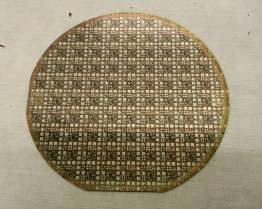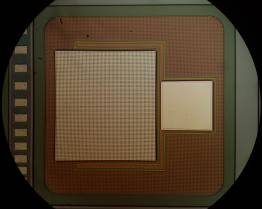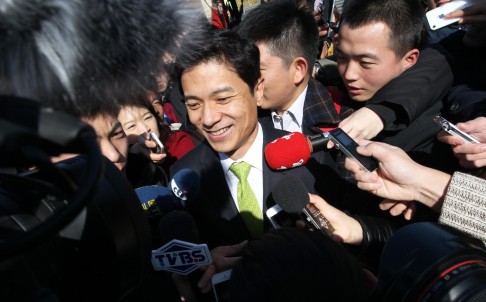vesicles
Colonel
No problem. None of that broaches oj the issues I was trying to avoid...which issues invariably lead to argument, high emotion, moderation, warnings, etc., etc.
completely agreed! That's I don't usually participate in that kind of discussion and support the no-politics policy at SD. You won't be able to convince anyone...
This is imply not so, vesicles. Numerous companies have large R&D efforts that are focused on the theoretical, just as I explained earlier.
Pharmaceuticals are a great example. I have a nephew who recently got his Doctorate in Pharmaceutical studies. He was immediately hired...at a very good pay...by a private company to do that type of research and he is loving it.
First of all, Congratulations to your nephew! Good for him to be able to do what he loves to do. That is the most important thing!
Most of the R&D efforts by big companies aim to apply very mature theories and ideas and intend to use their vast resources to generate a product as soon as possible. This kind of research is vastly different from purely theoretical work done in academia. For instance, time travel is being active researched in academia now. I am sure Boeing would not allow its talented and highly paid researchers to "waste time and money" on that now. that is what I am talking about. The long-term research vs short-term research.
Academia typically focuses on the long shots, where you need a lot of patience, time and money to get anything out of it. The most dangerous thing about these projects is the unpredictability. You would be considered lucky if you can get one project working out of 100-1000 projects that you invest in. And then there is the time factor. it might take you 100 years to work it out. No company can afford to wait that long. The industry typically focuses on the short-term projects. Because the theories behind these projects are typically very mature, the chance of failing is relatively small although many R&D projects do fail. However, companies can focus their resources (manpower and money) on a short-term goal and achieve amazing results. Take pharmaceutical companies for instance, drug discovery and screening is their strength. they can finish screening hundreds of thousands of small molecules and get some amazing positive hits within a couple years. It would take us centuries to do the same thing, let alone that it would be so difficult for us in academia to get a grant to do that...
And the industry and academia can achieve their own goals independently without interacting with each other. Because the goal is different, how each sector operates is also vastly different. I bet your nephew was in for a shock when he began working at the company. He's been so used to how academic labs work. He would have to do a lot of adjustment in the company. Mainly, how his ideas would be shot down, not because they are not brilliant but because it might take too long to see if it works... That's the difference in culture between industry and academia.
There is also a HUGE role for academia. Many government programs and many commercial programs issue grants for this type of study in all typed of field to academia.
My own experience with Chordoma Cancer at MD Anderson in Houston, TX is a great example of the Academic, the Commercial, and the Public sector all working together. The results (in my case) or without question., The best equipment, the best care, and the best treatment in the world came out of a fusion of all three.
]As I stated above, most successful comp[anise realize this and account for it oin their own research departments which have theoretical departments, and in the grants they issue for that type of research.
As stated, there are many that are not too. I am not sure that "Most" even qualifies overall. Perhaps in your own specialty this is true...but not in all.
I agree that it works wonders when all the sectors work together harmoniously. The MD Anderson is actually more complicated that what you can see on the surface. Most of the research done at MD Anderson is actually "translational", meaning that they mostly translate mature theories into clinical treatments and drugs. This is fantastic. However, officials at MDACC are seriously worried about the kind of training they provide to the students and postdocs in the labs at MDACC. Since most of these labs do not do hard-core science, the students and postdocs are not getting proper training. What they do all day is screening drugs. If they allow this to go on, MDACC will go downhill because they will lose their ability to innovate. Once the mature theories run dry, they would have to depend on other institutions to feed them innovative ideas. Thus, they implemented a series of policies to "force" students and postdocs into getting more exposure to hard-core science. So in a sense, MDACC is more like a big company, while Baylor College of Medicine and UT medical school are more like academic institutions (both focus more on hard-core science than translational stuff), although both also have amazing clinical programs.
I realize that I am biased against industry. I appreciate what the industry does. As I mentioned before, without industry's R&D programs, all the amazing ideas will stay simply as ideas on black boards and in published papers. Our civilization develops to what it is now because these innovative R&D programs in companies manage to translate empty ideas into solid products that impact our lives. However, my point is I believe that the industry and academia should stay separate as much as possible. The industry R&D should focus on short-term research while academia should focus on the long shots or crazy ideas. The two work the best when without the influence from the other side, IMHO.



